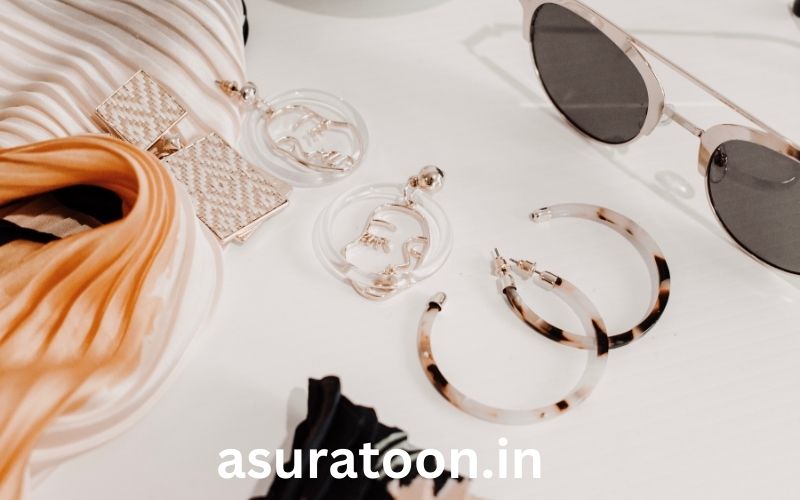When it comes to facial aesthetics, the position and angle of your eyes play a significant role in how your face is perceived. One of the key features in this regard is the canthal tilt. In particular, a negative canthal tilt has become a topic of discussion among facial plastic surgeons and those interested in cosmetic procedures.
Key Points:
- Negative canthal refers to the downward angle of the eyes at the outer corners.
- This condition can affect both appearance and perception of youthfulness.
- Several surgical and non-surgical methods are available to correct canthal tilt.
In this post, we will explore the causes of a negative tilt, how it affects facial aesthetics, its potential treatments, and why it matters for both function and beauty. Let’s break down all the details for better understanding.
What Is Negative Canthal Tilt?
Negative canthal refers to a condition where the outer corners of the eyes (canthi) point downward instead of being level with or slightly upward. It creates a slanted or droopy appearance of the eyes, which can contribute to an overall tired, sad, or aged look.
The normal canthal tilt typically has a slight upward angle at the outer corner of the eye. When this angle is reversed, it results in a canthal tilt, which can make the eyes look more tired or older than they actually are. This condition can occur naturally as people age or be present from birth.
Example:
A classic example of negative canthal is seen in many older individuals, where the downward angle of the eyes gives them a “sad” or “angry” expression, even when they are neither.
What Are the Causes of Negative Canthal Tilt?
Several factors contribute to negative canthal tilt, with some being related to genetics, aging, or other underlying conditions.
Aging and Skin Laxity
As people age, the skin around the eyes loses elasticity and firmness. The weakening of the tissues and muscles supporting the eyelids can cause the outer corners to droop, resulting in a negative tilt. This is often seen as part of the natural aging process, but it can also be exacerbated by lifestyle factors such as smoking or excessive sun exposure.
Genetics and Facial Structure
Some individuals may be born with a naturally downward tilt of the eyes. This can be a result of the underlying bone structure or the way the eyelids and muscles develop during childhood.
Neurological or Muscular Conditions
Certain neurological or muscular conditions, such as ptosis (drooping eyelid) or facial nerve palsy, can lead to a downward tilt of the outer canthi. These conditions affect the muscles that control the eyelids, resulting in an abnormal appearance of the eyes.
Table: Causes of Negative Canthal
| Cause | Description |
| Aging | Loss of skin elasticity and muscle support. |
| Genetics | Natural bone and muscle structure. |
| Neurological Issues | Conditions like ptosis or facial nerve palsy. |
How Does Negative Canthal Tilt Affect Your Appearance?
Negative canthal tilt can significantly impact your overall facial aesthetics. The eyes are often considered one of the most important features in determining beauty and youthfulness. When the outer corners of the eyes tilt downward, it can make a person appear older, more fatigued, or even angry.
A person with a negative canthal may also find that their face does not have the open, alert, and youthful expression that others might have. This may lead to a sense of self-consciousness or dissatisfaction with their appearance, especially in social or professional situations where first impressions matter.
Example:
Consider a well-known celebrity who undergoes a canthoplasty procedure to correct a negative tilt. After the procedure, their eyes look more lifted, giving them a refreshed, youthful appearance. This is a common cosmetic change that many people seek.
Note:
A slight negative canthal tilt may not be noticeable to others, but it can affect the way you perceive yourself.
Treatment Options for Negative Canthal Tilt
There are several methods to address and treat negative canthal, ranging from non-surgical procedures to more invasive surgical interventions.
Non-Surgical Options: Botox and Fillers
For mild cases of negative canthal tilt, non-surgical options like Botox injections can be effective. Botox can be injected around the outer eye area to temporarily relax the muscles, preventing the outer canthi from tilting further downward. Dermal fillers may also be used to lift the surrounding skin and add volume to the area, making the eyes appear more open and youthful.
Example:
A patient may receive Botox injections to relax the muscles around the eye area, lifting the outer corners for a more balanced appearance.
Surgical Options: Canthoplasty
For more severe cases, surgical options such as canthoplasty may be recommended. This procedure involves lifting and tightening the tendons and muscles around the eyes to achieve a more natural upward tilt of the canthi. Canthoplasty is typically performed by a skilled oculoplastic surgeon and is a permanent solution to correct negative canthal.
Table: Non-Surgical vs. Surgical Treatments for Negative Canthal Tilt
| Treatment Type | Description | Duration |
| Botox and Fillers | Relax the muscles and add volume to the skin. | Temporary (3-6 months) |
| Canthoplasty | Surgical lifting and tightening of muscles. | Permanent |
Note:
Consulting with a skilled professional is crucial to determine the best treatment for your unique case.
How to Prevent Negative Canthal Tilt?
While negative canthal may be caused by factors like genetics and aging, there are ways to prevent it from worsening or appearing early in life.
- Proper Skin Care: Regular use of moisturizers and sunscreens can help maintain skin elasticity around the eyes.
- Healthy Lifestyle: Eating a balanced diet and avoiding smoking can keep the skin around your eyes looking youthful.
- Facial Exercises: Some individuals benefit from facial exercises that tone the muscles around the eyes.
Conclusion
Negative canthal tilt is a facial feature that can impact both your appearance and self-confidence. Whether caused by aging, genetics, or other health issues, there are several ways to address it, including both non-surgical and surgical options. It’s important to work with a professional to explore the best treatment for your specific situation, whether you’re looking for a subtle improvement or a more dramatic change.
If you’re considering treatment for negative canthal, the first step is to consult with a board-certified oculoplastic surgeon or dermatologist who specializes in facial aesthetics.
FAQ’s
- What is negative canthal?
Negative canthal tilt refers to the downward angle of the outer corners of the eyes, making the eyes appear tired or older. - Can negative canthal tilt be corrected?
Yes, negative canthal can be corrected with treatments like Botox, dermal fillers, or surgical procedures like canthoplasty. - Is negative canthal a common condition?
It is quite common, especially with aging, and some people may naturally have it due to genetics. - How long does a Botox treatment for negative canthal last?
Botox treatments typically last between 3 to 6 months before requiring touch-ups. - What are the risks of surgery for negative canthal?
Like any surgery, canthoplasty carries risks such as infection, scarring, or complications with anesthesia, so it’s essential to choose an experienced surgeon.




